Guitar Legends: Rory Gallagher – the self-styled ‘working guitarist’ who was touched by genius
Does Ireland’s first guitar hero deserve to be mentioned in the same breath as SRV and Eric Clapton? Quite probably. Rory Gallagher was a pioneer with a sound and style as unique as his battered Fender Strat.
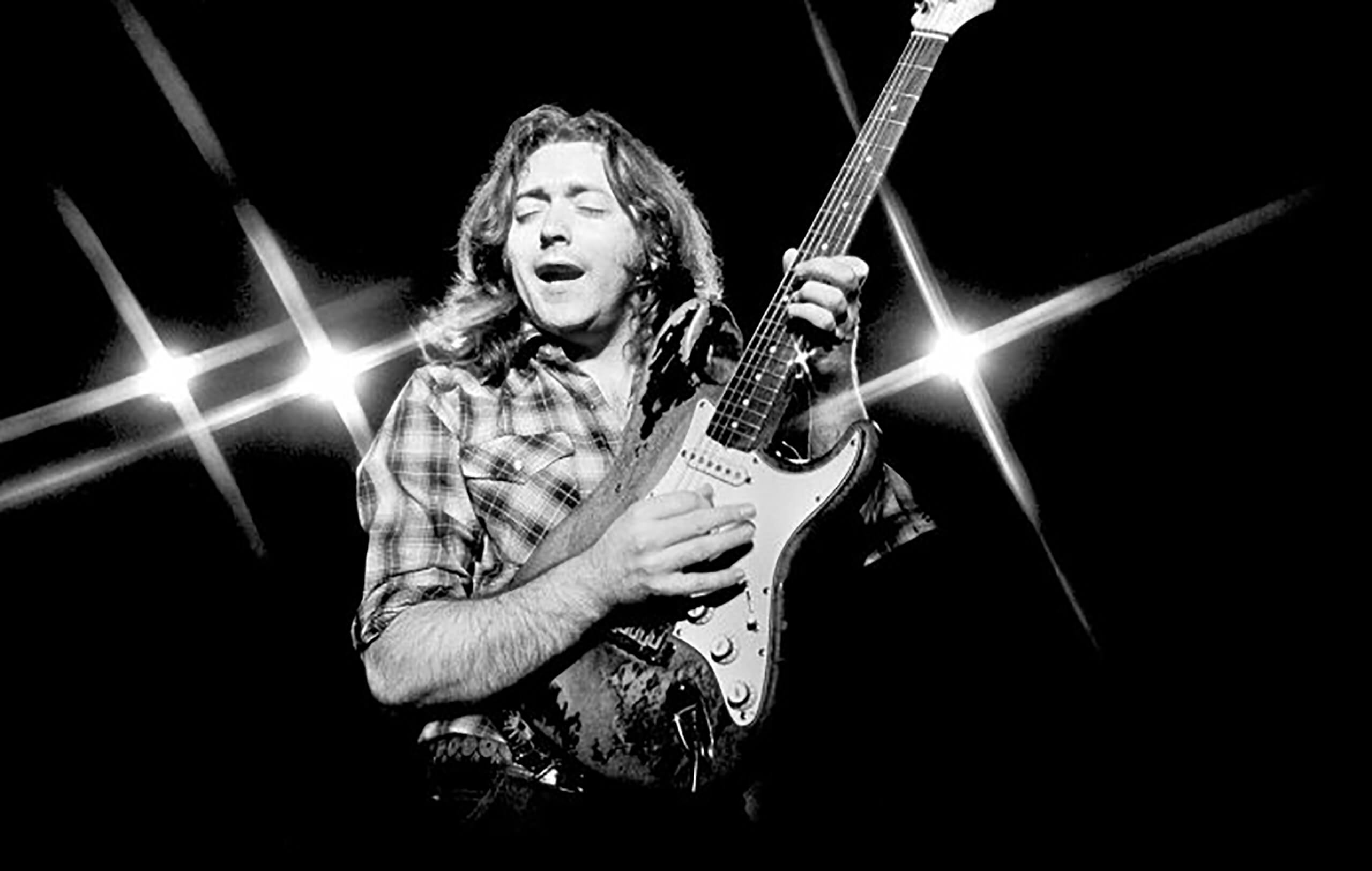
Rory Gallagher. Image: Brian Cooke / Redferns
It’s a sad truth that in rock ’n’ roll, dying can often be an unrivalled career enhancer. When Irish bluesman Rory Gallagher passed away in 1995, his career had seemingly plateaued: neither of his final two albums, Defender or Fresh Evidence had troubled the UK charts at all (though later went Silver.) But in his posthumous years, under the guidance of Rory’s brother Donal and now his nephew Daniel, Rory Gallagher’s estimable talents have been refocussed in a series of albums that have not only delighted diehard fans but brought-in new followers too.
Gallagher never got the attention he probably warranted, even if he’s sold over 30 million albums. He arrived just after the height of the ‘British blues boom’ of Clapton, Beck, Peter Green et al but really, deserved to be considered a peer… albeit from a close-by nation. His electrifying Strat playing was only one aspect of his talents: he was also a fine acoustic bluesman who dug deeper than many (his heroes were Big Bill Broonzy, Lead Belly and Son House rather than Buddy Guy and BB King), a jazz student, a keen interpreter of trad Irish songs and a songwriter of some note. If there was a problem with Gallagher’s career it was his image… or complete lack of it. He was, as he liked, ‘just’ a working musician.
Even so, his followers are testament to his talents. There aren’t many guitarist who can unite the disparate likes of Joe Bonamassa, Johnny Marr, Brian May, Slash, The Edge and Mick Jagger as fans. If Gallagher had joined the Rolling Stones (in the mid-1970s for Black And Blue) – a tale of much speculation – we’d be remembering a much more famous musician, but Rory followed his own path, and uniquely so. As Andy Fairweather-Low put it on Gallagher’s passing, “If ever there was a troubadour… this man was it.”
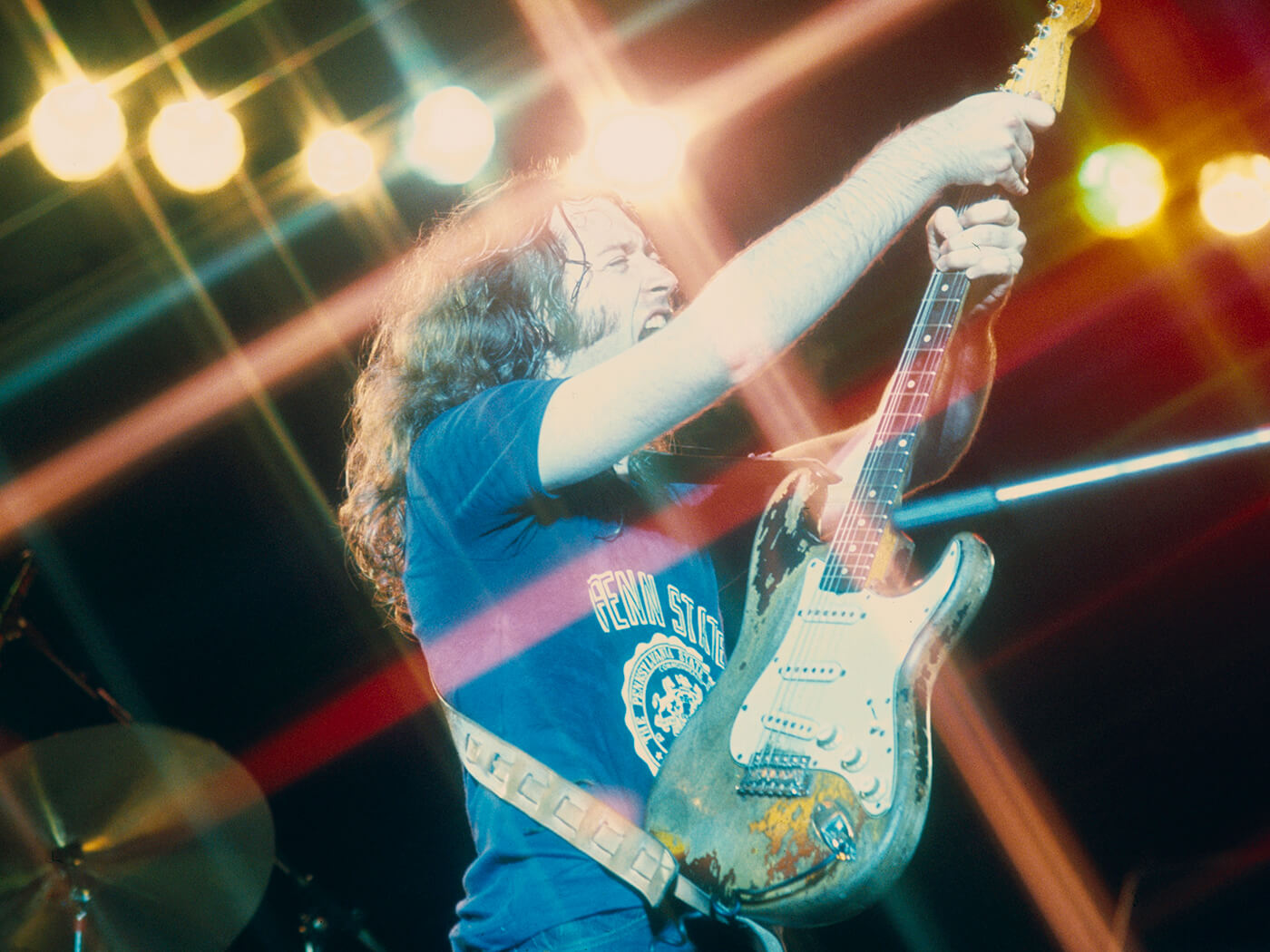
In his own words
“I was 15, which is pretty young even by contemporary standards. But I didn’t realise I was that young, y’know? I’d been playing since I was nine, so in my own eyes I was a bit of a trouper.” On turning professional with showbands in his teens
“I learned from Muddy just tuning his guitar, sitting there with his cigar in his mouth — the whole calm vibe off him. But he could really switch on the menace when he played… The controlled power! Jerry Lee was a madder thing. Whole Lotta Shakin’ on the album just… started!! Literally from the key. In the studio he’s worse then he is on stage. Lifting up the piano and all the rest. Bottle of Bourbon in a brown paper bag next to him at the piano. He’s no fake. Good session. Good laugh!” On his guesting with heroes Muddy Waters and Jerry Lee Lewis.
“I never started out to become a strict re-creator of the blues or even a modern young bluesman, as it were. I mean, I wanted to be me. I’m a huge blues fan, but I still have a bit of Eddie Cochran and Buddy Holly hovering around in my head.”

Gallagher’s gear
Gallagher owned a variety of guitars (often curios and pawn-shop oddities he’d pick up on tour) but only a select few appeared on his records, and these were well-chosen to offer Rory a huge array of sounds. Like his very musical ethos, these were not flash, boutique instruments – they were working tools, but ones imbued with character.
And Gallagher’s sound was often more diverse than he’s given credit. The jazzy figures of Taste’s It’s Happened Before, It’ll Happen Again (1970) are a world of away from the metal-esque wailing of Top Priority’s Just Hit Town (1979), but maybe his unchanging image gave rise to the incorrect notion that every record simply sounded the same too.
1961 Fender Stratocaster

Rory’s most famous guitar by far is his 1961 Fender Stratocaster (s/n 64351) that he acquired for £100 on HP in 1963. According to fable, this was the first Stratocaster to ever reach Ireland, and prior to Rory, it was owned by Jim Conlon of the Royal Showband. In a tale echoing Hank Marvin’s own first Strat in England, Conlon had ordered a Fiesta Red Strat to match his band’s outfits… but a sunburst was shipped instead. Conlon used the sunburst as a stopgap until his coveted red finally arrived some 18 months later.
Rory’s ’61 was never (or only early on) a pristine “time capsule”, but its iconic finish is worn even by vintage guitar standards. Pictures from Taste at the Isle Of Wight 1970 show the Strat already battered and back to some bare wood. Speaking to this author in the mid-2000s, brother Donal Gallagher maintained it was Rory’s “unusually acidic” sweat that caused all this damage to the burst finish (and the neck). You can even see the dye of Rory’s blue jeans seeped through onto the finish to this day and Daniel Gallagher describes the guitar being, “Like driftwood”.
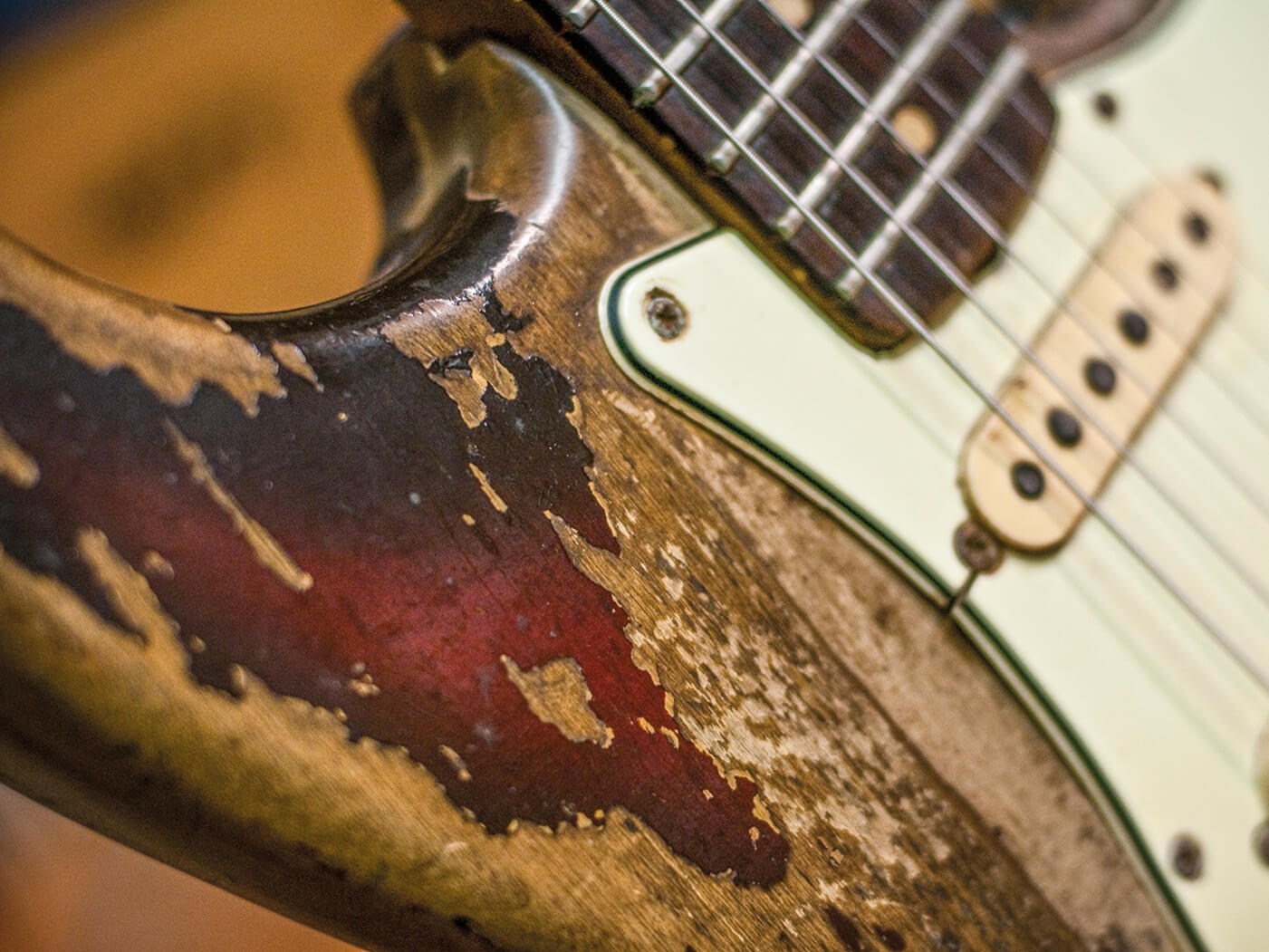
However, another incident early on in Rory’s career may have been a significant contributor to the wear and tear the guitar suffered.
“The start of the wear would have been around 1965 or ’66, when the guitar got stolen,” Daniel told Guitar.com in 2019. “They actually did a little piece on Ireland’s version of Crimewatch! ‘Oh and a young man with long hair has had two of his guitars stolen. If anyone sees them, they look like this…’ and a picture went up on the screen. They got dumped in a ditch about two weeks later, because the guy couldn’t sell them – obviously! They’d been on telly, and it was probably the only Strat in Ireland. So because they were too hot, he dumped them in this ditch, where someone found them and two weeks later, Rory had them back. But I think it got a bit of water damage from that, and probably a lot of scratches from brambles and all that, plus Rory’s constant playing of it just wore it away!”
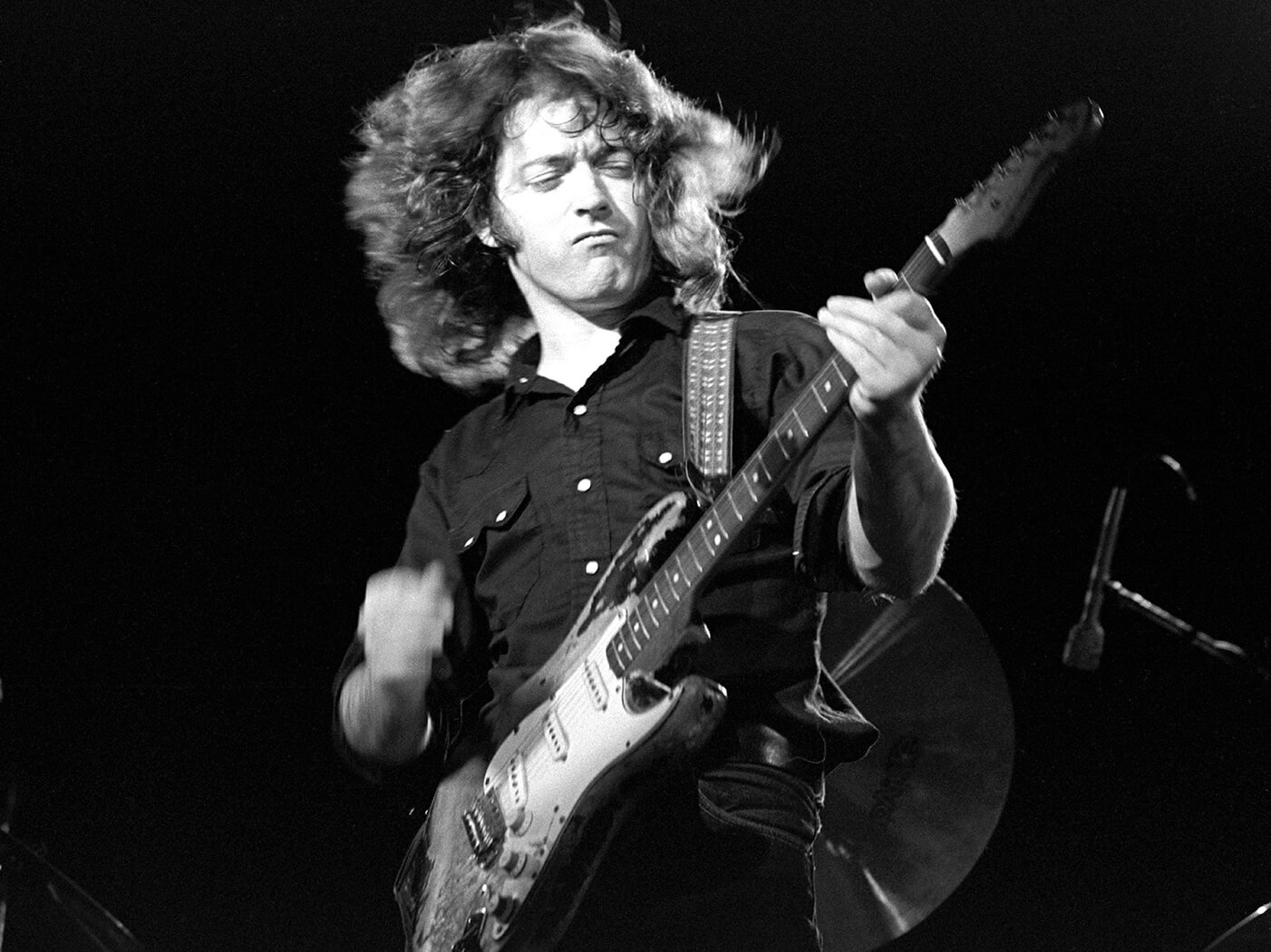
After he got the Strat and his almost equally beloved Telecaster back, Rory vowed to never let either guitar out of his sight again.
Rory was a relentless tinkerer, and as such the Strat was heavily modded. The original Fender single-coils remained until the early/mid-70s only, but neck and bridge were replaced due to moisture damage (probably a mix of its time in the ditch and Rory’s ‘acidic sweat’) with stock Fender pickups, it seems, but obviously later models. Then in the early 80s, the bridge pickup was changed again (see the black surround): it was possibly from a 25th Anniversary Strat Rory also owned but was rarely seen with. Tinkering continued: early 90s, the ’61 had mid-70s Fender pickups at neck and middle and an early DiMarzio FS1 in the bridge, but he eventually went back to a full set of stock Fenders.
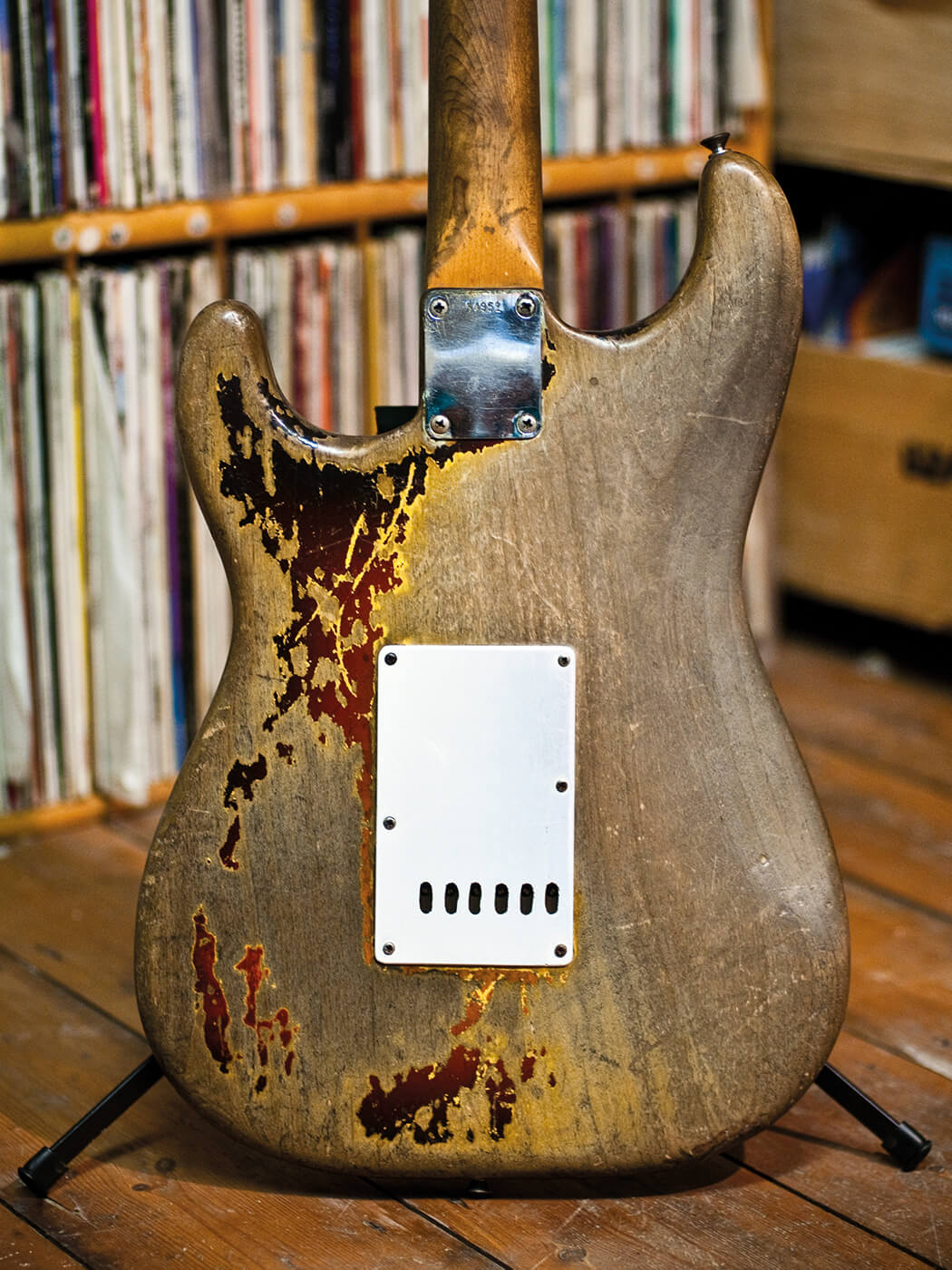
The moisture affected the neck, too, which was taken off periodically in the 70s (and for a longer period circa 1979) to dry out: but Gallagher never found a full-time replacement he loved (it was a veneer) so eventually went back to the original ’61 neck in 1982 or so. The nut was replaced, the original tuners were later swapped for a combination of five Sperzel and one Gotoh tuner, and the tremolo piece was blocked off from the back with a piece of wood so the Strat would stay in tune better… Rory rarely used the tremolo anyway. The scratchplate was also changed.
Perhaps more crucial to actual sounds, Rory also rewired the tone controls to have the bottom pot as a single master tone, disconnecting the middle pot, and leaving the master volume control as it was. He also installed a five-way selector switch in place of the vintage three-way one, which allowed for more variety and control over the sound. Like David Gilmour’s Black Strat, Rory’s ’61 was altered and refined as years went on.
The ’61 was the backbone of Rory’s electric sound, and it’s easier to list what it isn’t on. (That said, from the mid 1970s he had a more mint 1958 he reserved for studio backup.) The 61 became a totem for fans of Gallagher’s road-worn blues, even appearing large on the cover of his 1975 album Against The Grain. Evidence of Rory’s untapped fanbase came in 1997 when the Fender Custom Shop announced a limited run of 40 replicas… they were besieged with requests for more, and the guitar can still be ordered.
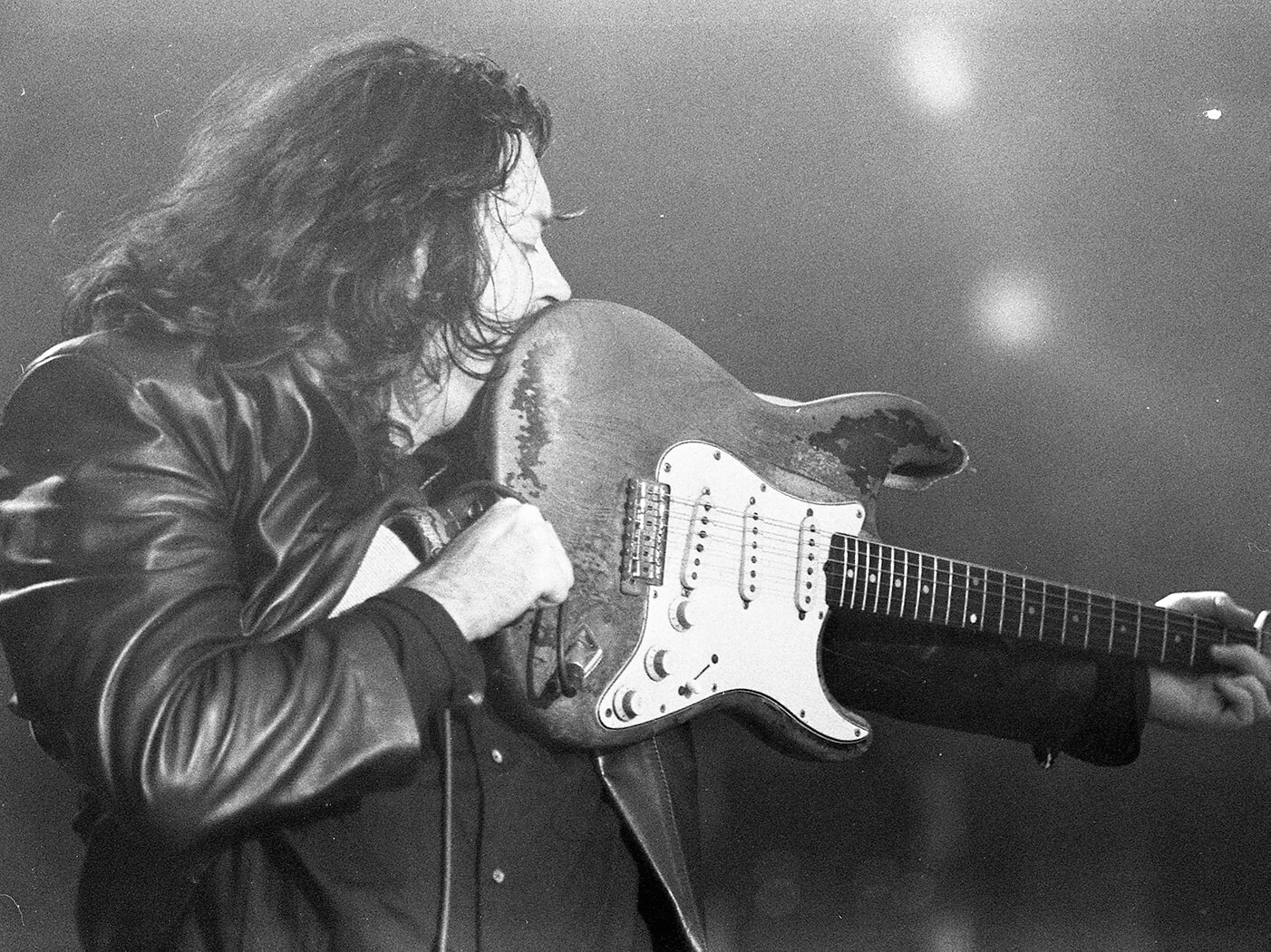
Fender Esquire and Telecasters
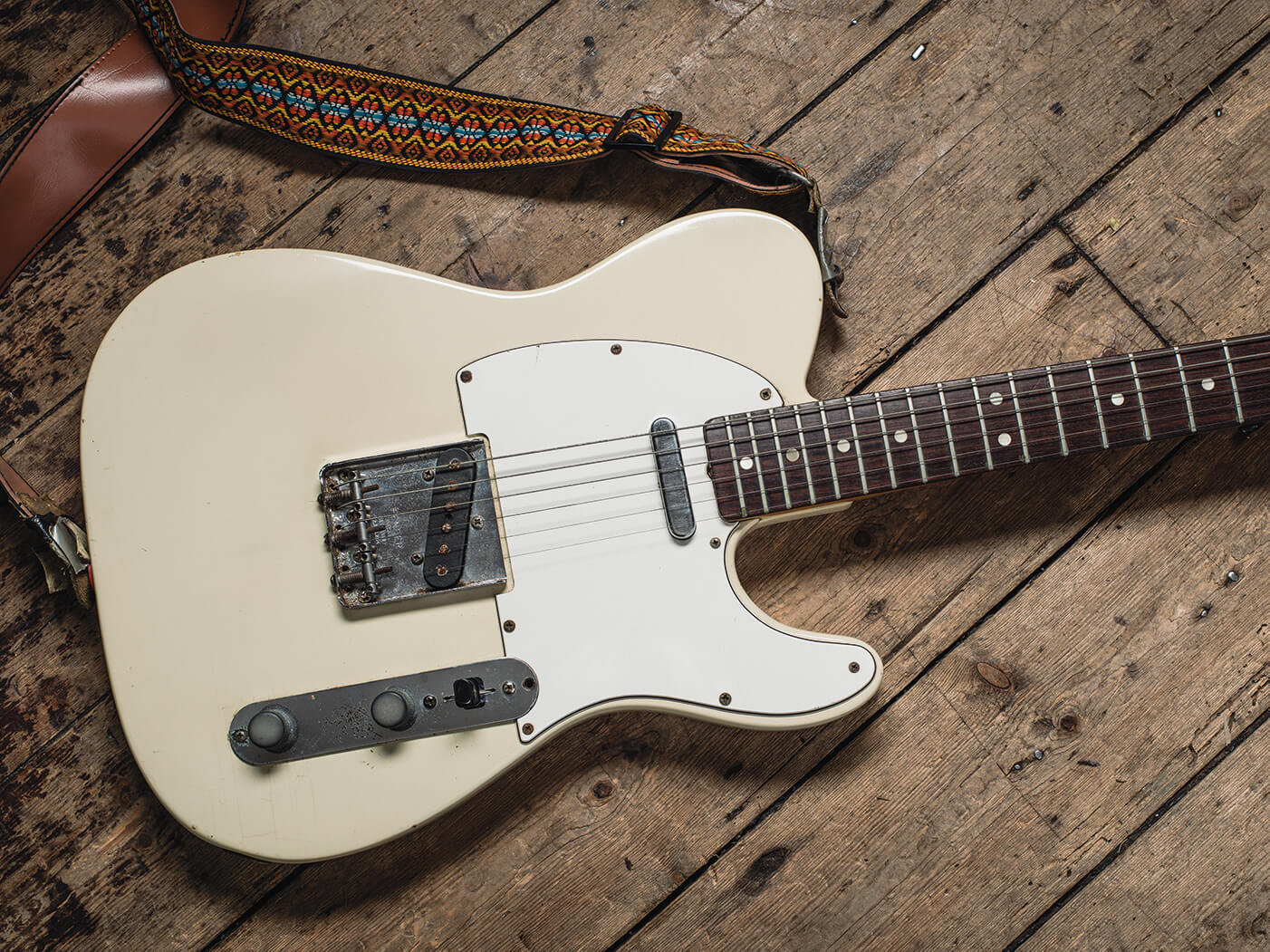
In Taste, Gallagher also regularly played a (refinished white) 1966 Fender Telecaster with rosewood board – the refin may have again been prompted by its ditching, which would explain why the guitar doesn’t look as battered as his Strat. He also had a maple neck black-finish 1959 Fender Esquire acquired in the early 1970s… but he later added a neck pickup, so Gallagher referred to this as a ‘Telecaster’ as well.
Both were used for slide playing in particular, and the Esquire was modded quite a bit; scratchplates, bridges, saddles and so on. Gallagher was seemingly never a fan of the Telecaster neck pickup either (he liked it alone, but once described the middle-position/both-pickups-on setting as “a sound I detest”) so these were both eventually “mongrels” too – fitting a Strat pickup at neck, for example, and later adding a third middle pickup and 5-way toggle for a Strat/Esquire hybrid. The three-pickup version of the Esquire can be seen on the cover of the the 2020-released The Best Of Rory Gallagher set.
It’s not worth over-worrying about the numerous mods really… they were the demands of a working musician, as and when needed.
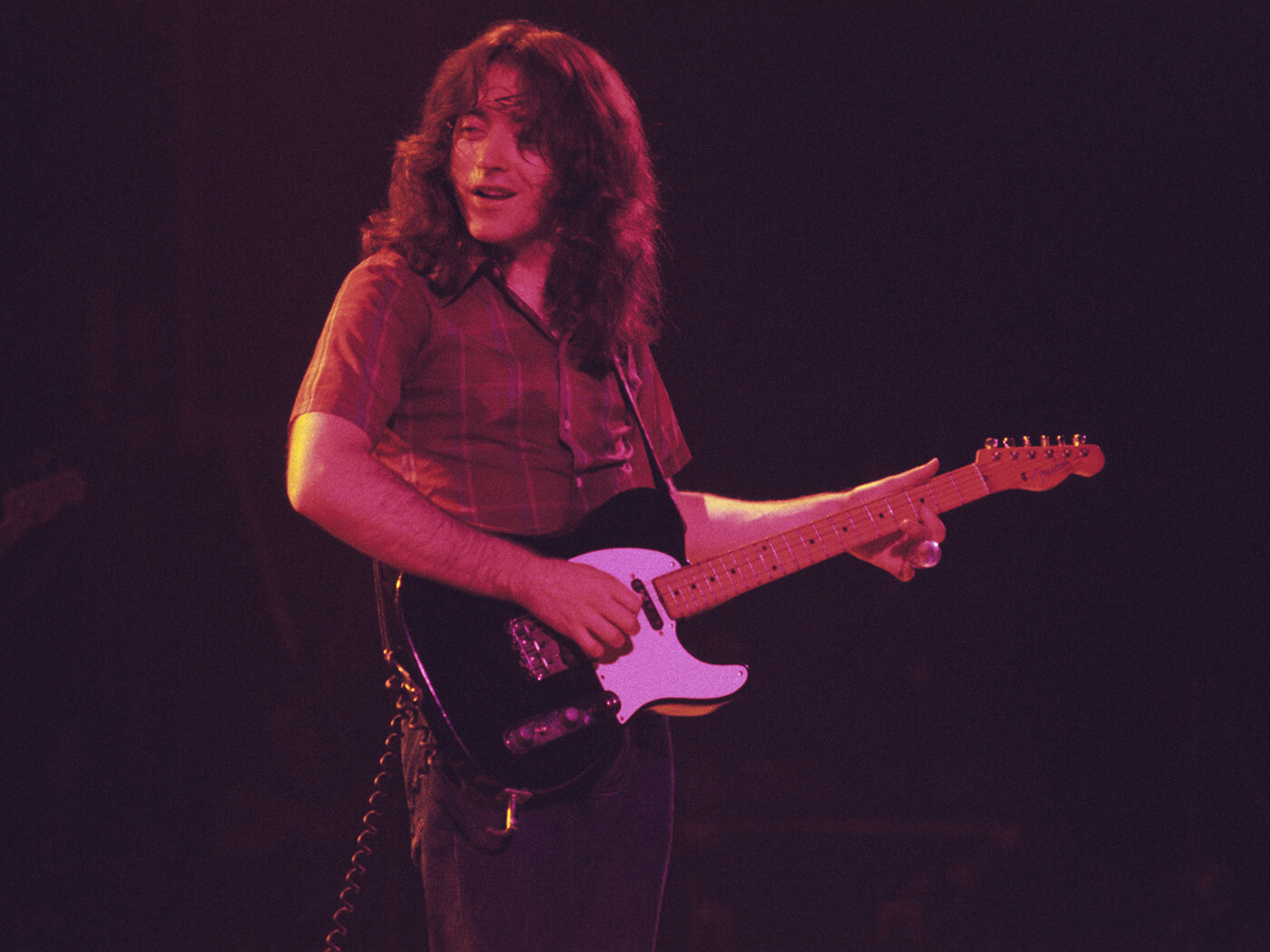
1963 Gretsch Corvette
The Tele and Esquire were used predominantly for slide playing but by the late 70s Gallagher had decided to retire the ‘black’ Esquire. His brother Donal picked up a Gretsch Corvette for around $80 in a pawnshop which eventually became the Esquire’s replacement. Again, although old it was hardy kept a pristine vintage instrument. Gallagher removed the Bigsby (he didn’t use vibrato arms much at all) and modified it.
“The Corvette is Gretsch’s attempt at a Les Paul Junior, but I took off the Gretsch pickup because it was too weak and I put on a P-90, which is an old black Gibson single coil pickup,” he explained. It was interesting choice: more than once, Rory sometimes said he otherwise didn’t get on with Gibson guitars…hence the most non-Gibson (a single-coil) of Gibson mods? Nevertheless, the Corvette was known to be one of Gallagher’s favourite guitars. A mint used Corvette of this era can command up to £2k these days.
Acoustic Guitars – Martin D-35 and National Triolian
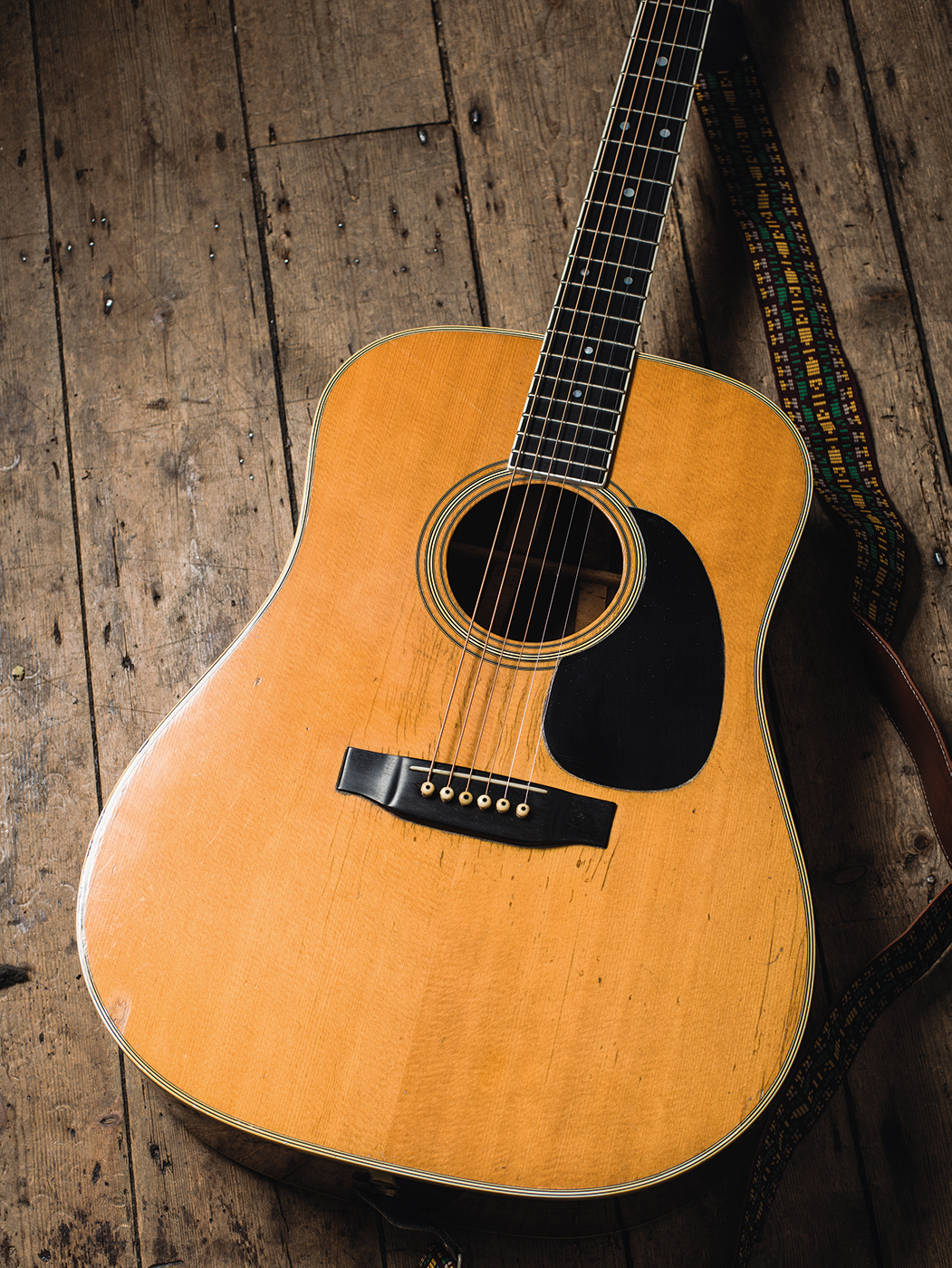
One of the finest Rory releases of the posthumous years was Wheels Within Wheels (2003), a collection of acoustic-led tracks that showcased Gallagher’s flattop prowess. It encompasses folk blues, flamenco, skiffle and traditional Irish music and features Juan Martin, Martin Carthy, Bert Jansch, Béla Fleck and Lonnie Donegan among its guests. His acoustic mastery is also to the fore on recent LP Blues.
Rory relied on two main acoustics throughout his career. His main acoustic was a Martin D-35, bought new in the late 60s. He later recalled, giving some credence to the notion that acoustics ‘age’ better, “The thing about a Martin is that it takes about five years to play itself in, it has to develop through a whole lot of things like the heat of player’s body, the atmosphere it’s played in and all that. When I first got the Martin, I’ve gotta say that I was a bit disappointed, but as I played it, the guitar seemed to get better.” (told to Melody Maker in 1975.)
His most famous, though, was his 1932 National Triolian. He bought it from a “travelling guitar salesman” while on his first US tour in 1973, and it famously features on As The Crow Flies from the Irish Tour 74 film/LP and was subsequently used for most acoustic slide numbers. It only cost Rory “about £100.” “It’s got more of a banjo sound and it’s got the old classical machine heads,” her later explained. “It had the old wooden bridge so I had that changed to an ivory or some other kind of bridge by [UK luthier] Chris Eccleshall. The resonator caved in, believe it or not, so I had that beaten out again… The National is really good though, even for a beginner to pick it up and play it, it almost plays you. I can tell you, it brings power to your hands, you move from that neck to the Strat and it’s like running your hand across a jelly.” Look at this similarly-superb specimen of a 1932 National Triolian.
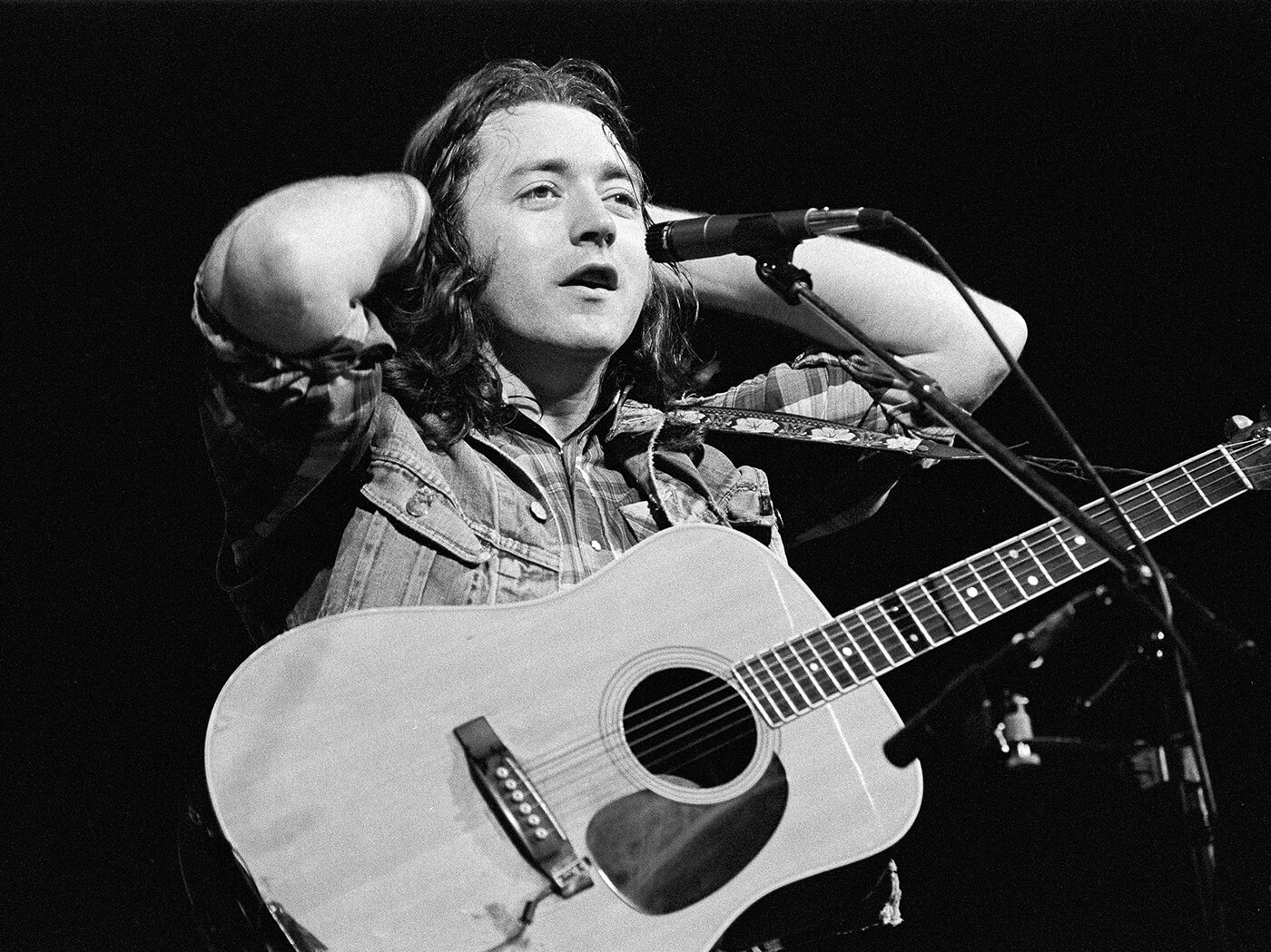
Other guitars…
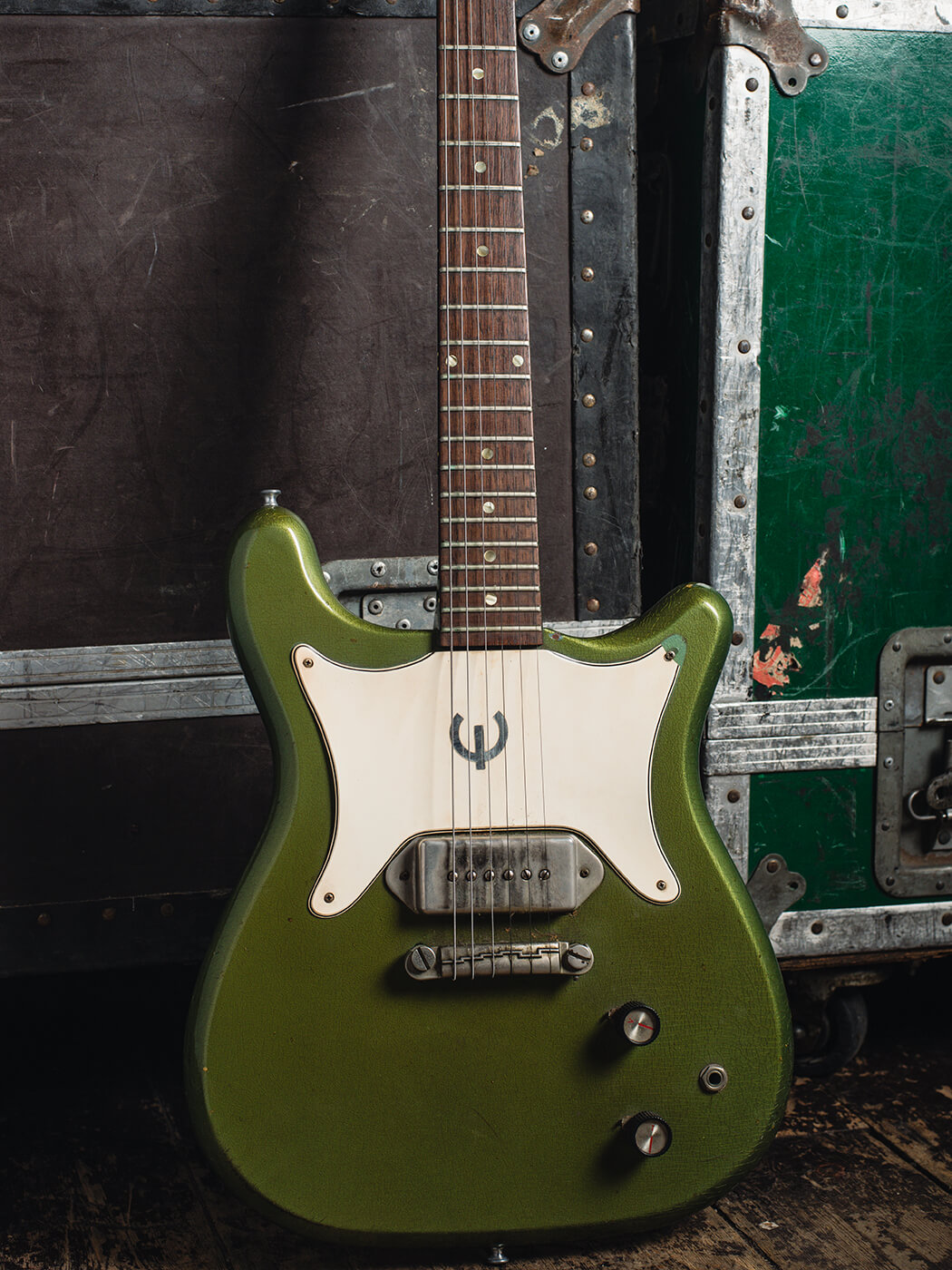
Although the above are the guitars most associated with Gallagher, he had an eclectic haul of 6-strings often used just for specific songs. He had a 1968 Danelectro/Coral 3S19 Electric Sitar, used on Top Priority’s single Philby. For the recording itself, Rory borrowed one from Pete Townshend… but then needed one permanently for touring. With only 50 ever made, these Electric Sitars weren’t cheap… but buying outright was cheaper than renting Townshend’s long-term. Donal Gallagher found one in the US for $1500.
When it came to Gibsons, Gallagher did like Melody Makers and LP Juniors. A 1960 Melody Maker (with a retro-fitted humbucker) was often pulled out for slide as well, and when Rory jammed onstage with Slash in 1991 at The Roxy in LA, he gave the Gunner his MM to play. He also owned single and double-cut Jnrs.
Other oddities in the Gallagher stash, used rarely, included a few Supros, a Mosrite Joe Maphis double-neck, another P-90 equipped Epiphone Coronet, a Teisco Del Ray, a heavily modded Rickenbacker Combo 400, a 12-string Vox and even a Gretsch S-200 Thunderbird… no doubt bought in homage to Muddy Waters. Likewise, his love of Lead Belly likely led to him buying a 12-string Stella acoustic.
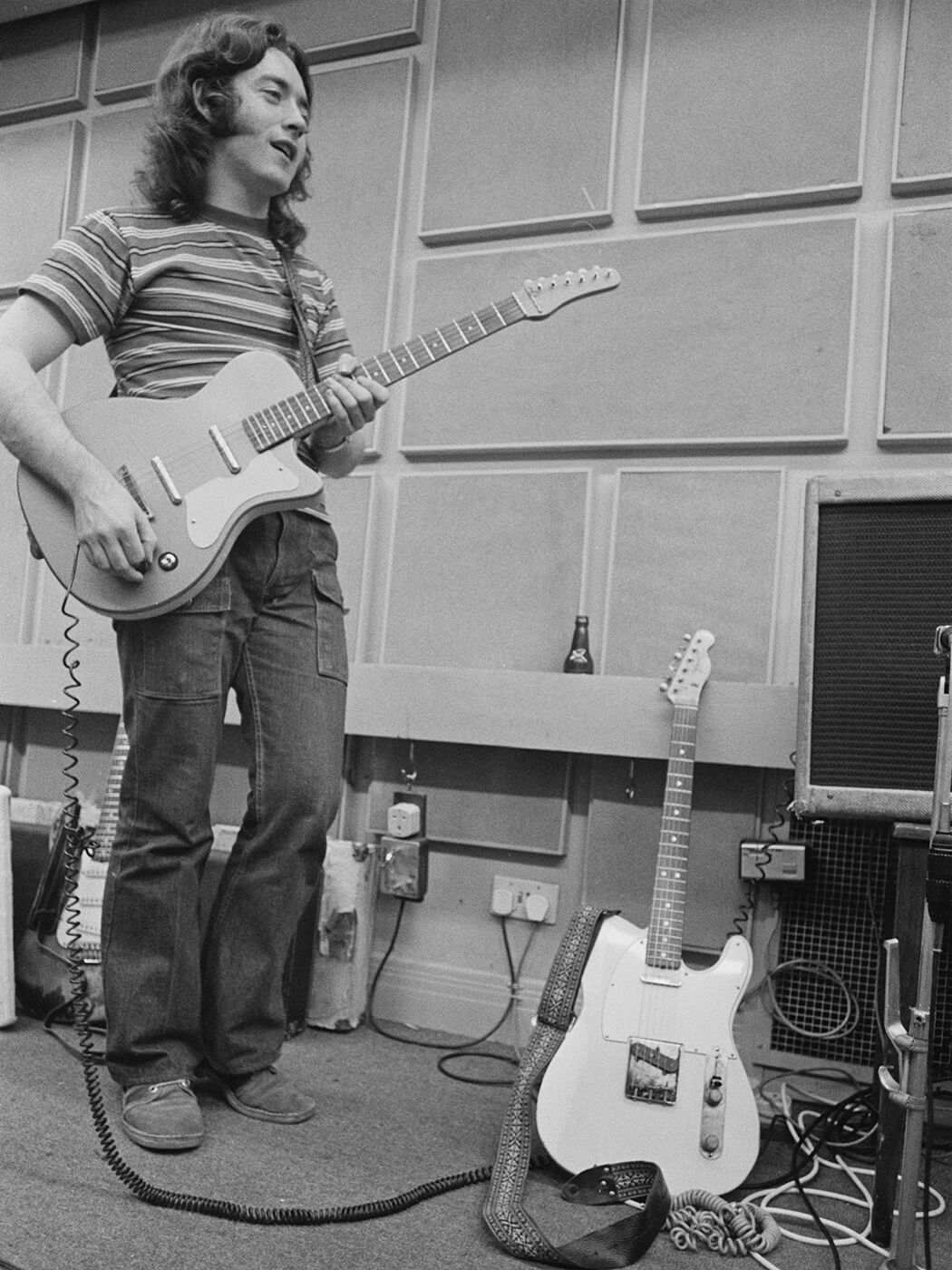
Amps & Effects
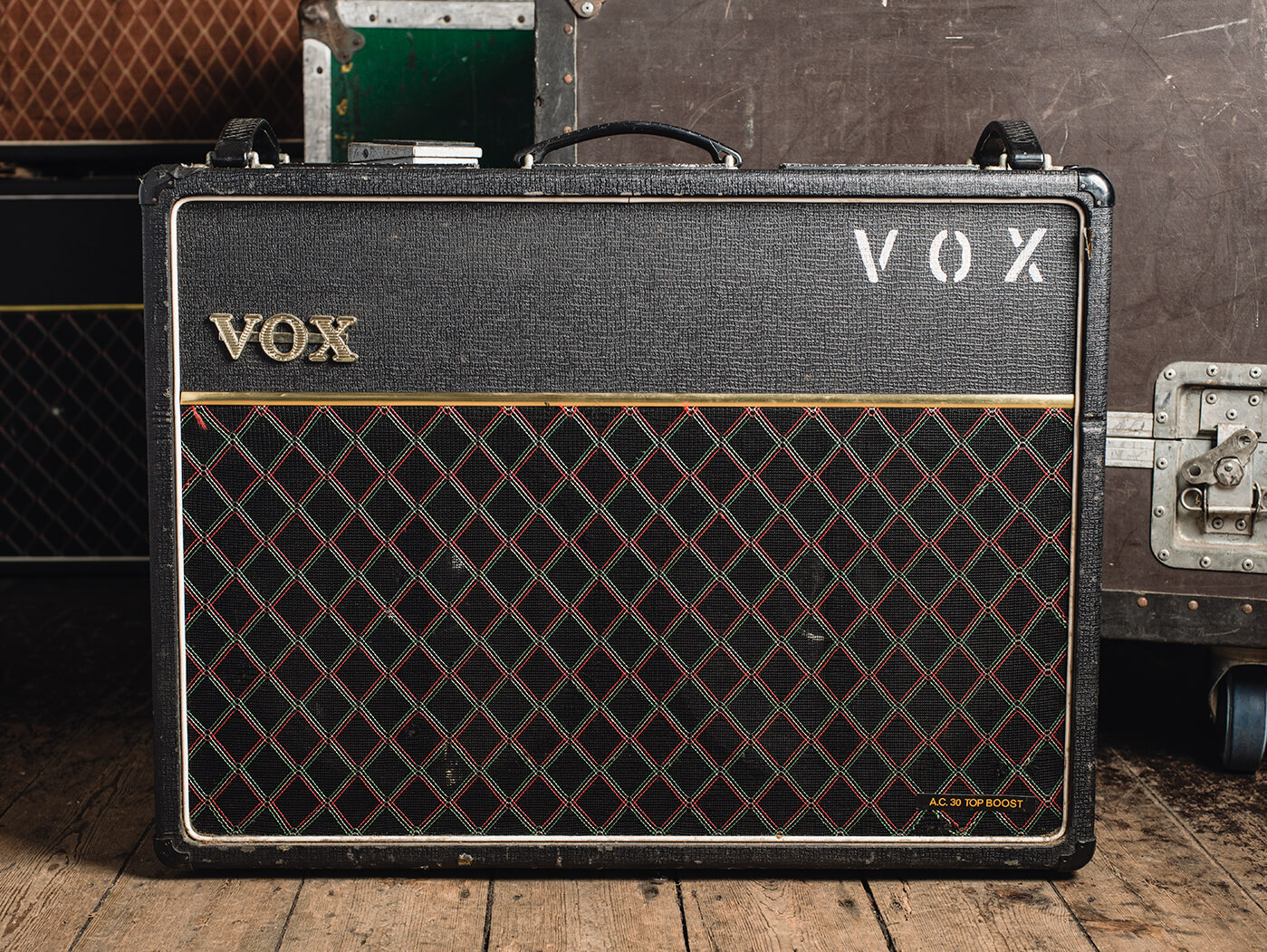
Rory’s workhorse studio amp, bought in the 1960s, was a Vox AC30 Top Boost. From the Taste era, he usually used it in conjunction with a Dallas Rangemaster Treble Booster… a tone that so impressed Queen’s Brian May he asked Rory just how he got it. An unlikely tone-link between the 1970s’ most no-frills rocker and the same decade’s frilliest glamsters.
Onstage, he incorporated Marshall as well but confided this was mostly for venue volume: he only ever really heard his own tone via the Vox. From 1973 or so, when he expanded his own band to include keyboardist Lou Martin, he also used a 1956 Fender Twin. Heroes were again the inspiration; “it’s the one [Buddy] Holly and [Eddie] Cochran used to have, it’s really good.” He later used a 4×10 1954 Fender Bassman. In the studio, he made use of a very old 1950 Fender Champ (similar to Eric Clapton in Derek And The Dominos).
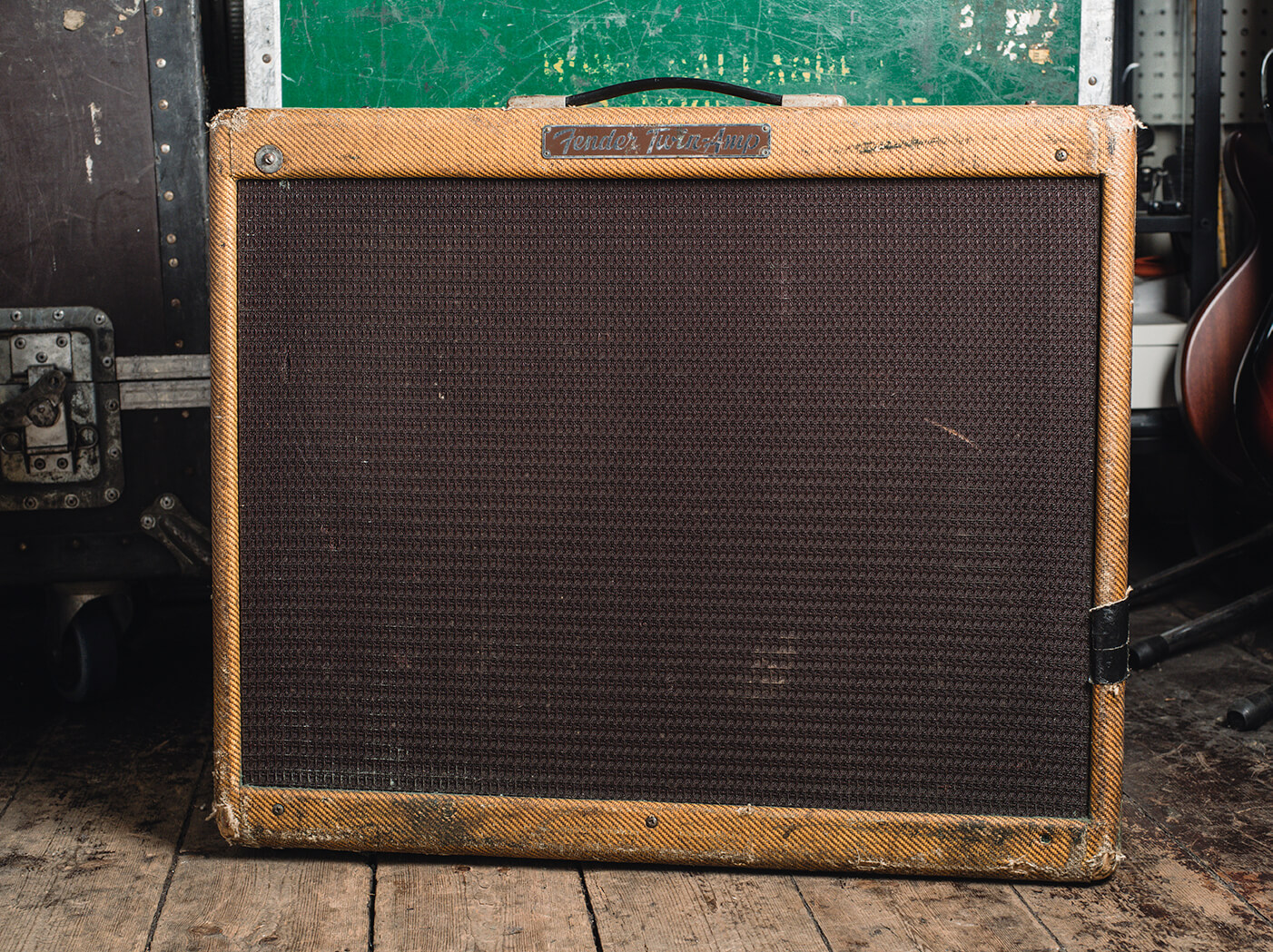
Gallagher actually had a big haul of what are now ‘vintage’ pedals, but he wasn’t a huge fan. He said in 1974, “I use a Treble Booster on stage to give the amp more poke… otherwise I’m plugged more or less straight in and I’m into what you can do with your hands within that small range.” There were exceptions later in his career: the live version of Moonchild on Stage Struck, in particular, has some heavy phasing (an MXR Phase 90, later a BOSS BF-2 Flanger). He used a vintage Binson Echorec and WEM Copicat for slapback, and an MXR Dyna-Comp compressor for leads on recordings.
But one aspect of Gallagher’s live playing is the variance in tone he could get, while clearly plugged straight into an amp with no effects whatsoever.

Essential listening
Sometimes, record labels get posthumous compilations just right – especially when seeking the input of relatives. So it is with 2020’s 2xCD The Best Of Rory Gallagher (Universal) which covers the Irishman’s whole career and range of styles. If you like even half of this, congratulations, you’re a Rory Gallagher fan. Guitar.com has added a few other personal favourites.
Playing Style
Although known as a “blues player”, Gallagher wasn’t really that simple. There were a lot of Irish motifs in his music as well – no surprise given the Celtic roots of much of indigenous North American country, folk and blues. In theory terms, his approach was often very ‘modal’ but it’s unlikely he even thought of it that way. He was also a fan of jazz (he played saxophone) and some of his early records, particularly Taste’s On The Boards, have a distinctly free-form approach. Fifties rock’n’roll was there too: Eddie Cochran, he joked in the 1980s, “would be ‘heavy metal’ now.”
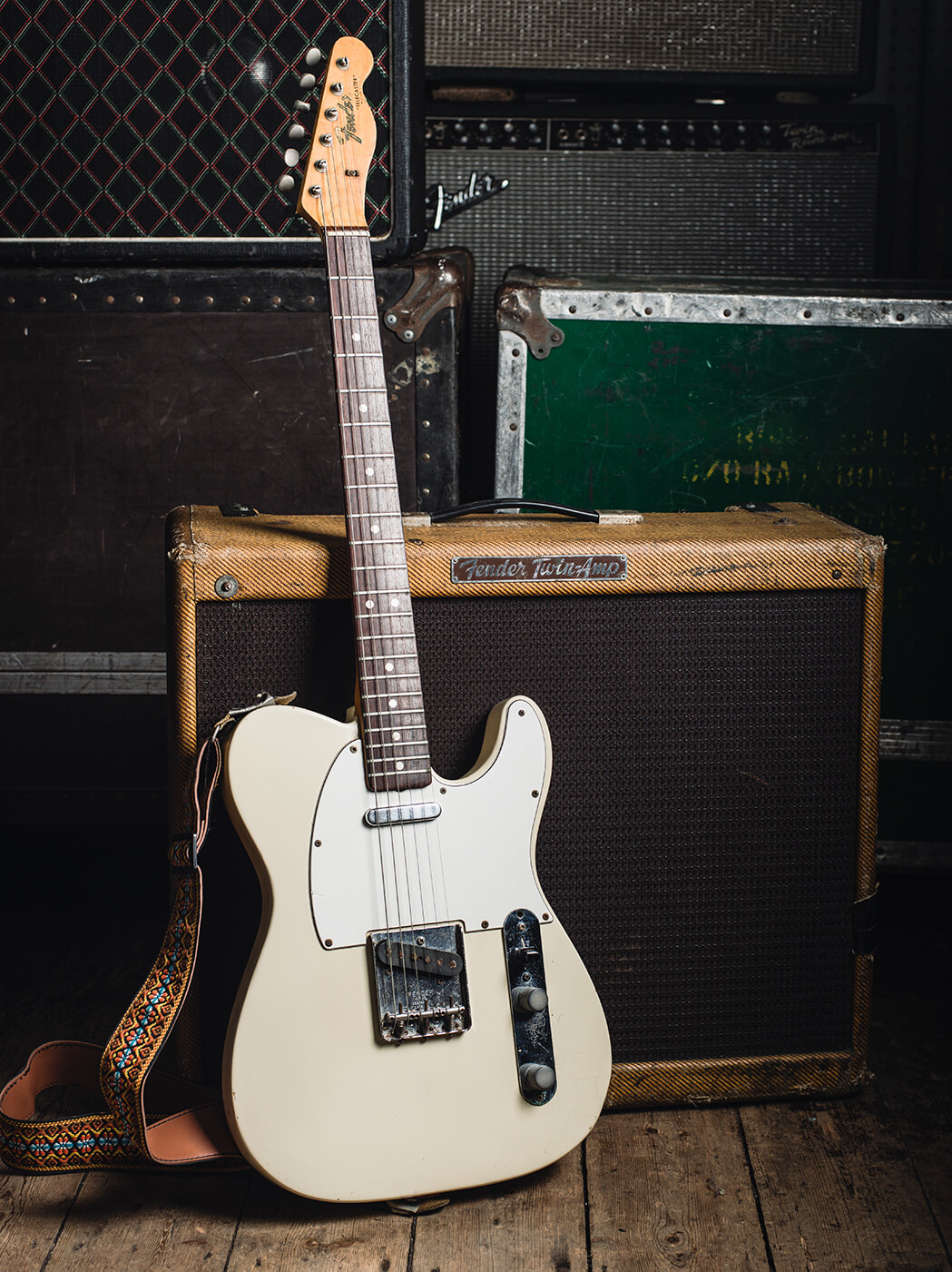
On electric guitar, Gallagher had a heavily physical style – you can see the pick dents and scratches on his ’61 Strat clearly. In that way, as with the later Stevie Ray Vaughan, aping his style will require a strong physical attack. It’s that way you’ll also get his pick squeals/pinched harmonics. But he was simultaneously a very clean picker – listen to the amazing rolls on something like Cruise On Out. That simply takes a lot of practice. Jeff Massey at Reverb.com does a great job of dissecting the basics of RG’s style. Good luck!
For more essential guides, click here.




